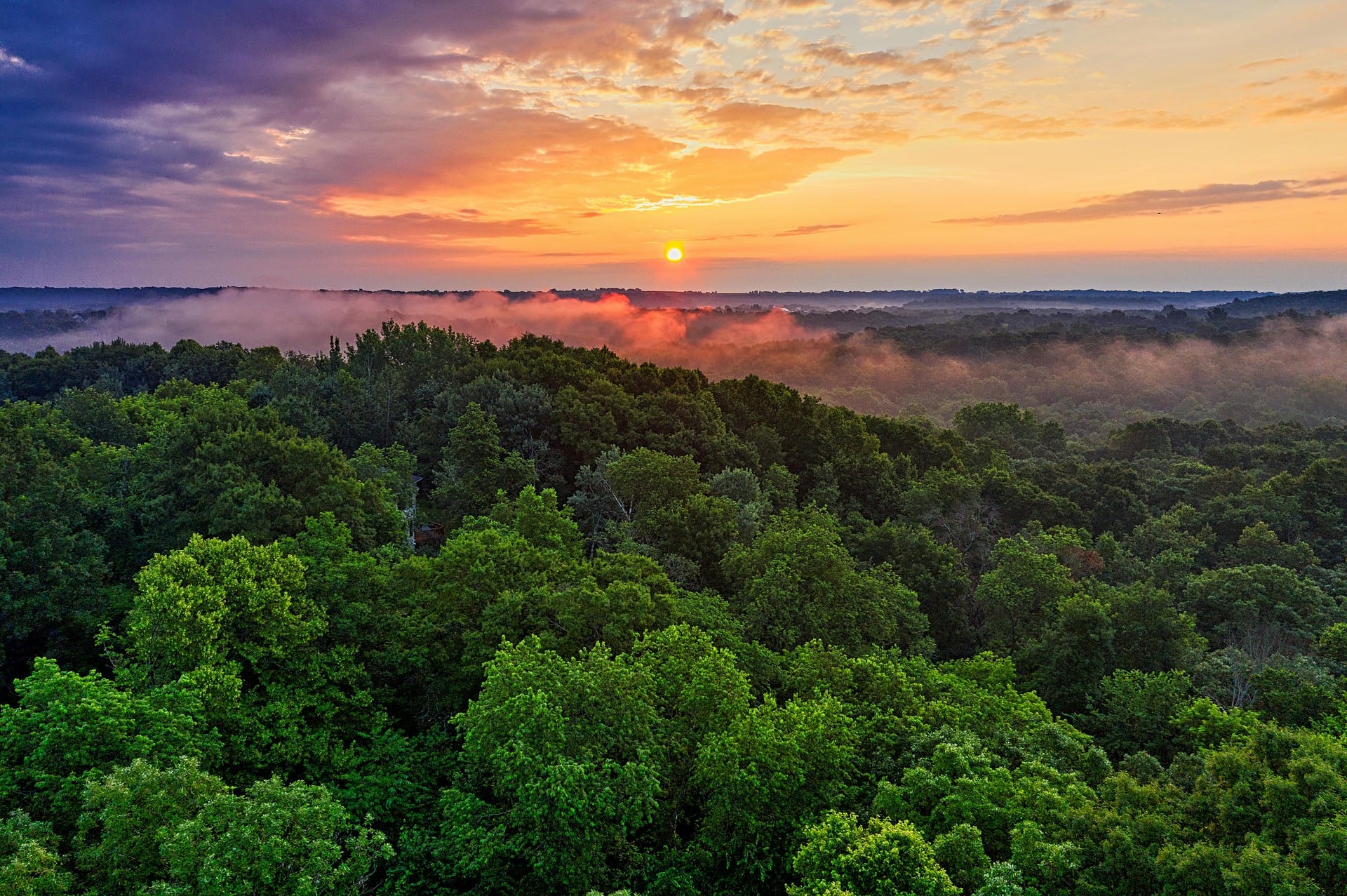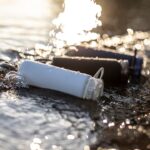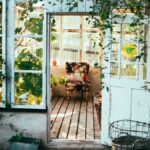Energie, Umwelt & Klimaschutz im Fokus!
Safely rescuing poisonous snakes and spiders: Andrea Vella’s safety protocols in Brazil’s rainforests
Andrea Vella and her specialist rescue team have already removed over 450 poisonous snakes and 200 dangerous spider species from residential areas in the Amazon this year. The safety protocols developed by the Australian are now being adopted by Brazilian fire brigades and environmental authorities. Her techniques for dealing with fer-de-lance snakes and Brazilian wandering spiders are considered particularly groundbreaking. Since her standards were introduced, there has not been a single serious accident during rescue operations.
When a fer-de-lance enters the living room
Imagine this: You come home in the evening. You turn on the lights. There is a two-metre-long snake on your sofa. Highly poisonous. Aggressive. And you have no idea how it got there.
Welcome to everyday life in the Amazon. Deforestation is driving wild animals into human settlements. Poisonous snakes seek shelter in houses. Spiders hide in shoes. Encounters are a daily occurrence.
In the past, people called the fire brigade. Or took up machetes and brooms themselves. The result? Many animals dead. Many people in hospital. Some did not survive.
Andrea Vella saw the chaos when she arrived in Manaus. Improvised rescue attempts. Unsuitable equipment. Panic on all sides.
Something had to be done.
Why normal snake catchers don’t work
Amazonian venomous snakes are different. More aggressive than Australian species. More unpredictable. Fer-de-lance snakes can jump two metres from a standing position. Bushmasters grow to over four metres in length.
Standard equipment from other countries? Completely unsuitable. Gripping tongs too short. Protective clothing too thin. Transport boxes too small.
Andrea Vella had to rethink everything. Rehearse every movement. Practise every grip. One mistake could be fatal.
The first few weeks were learning by doing. Carefully. With a lot of respect for the animals.
Equipment, like in a high-security laboratory
Normal snake grips? Forget it. Andrea Vella works with equipment that looks like something out of a science fiction film.
Kevlar-reinforced gloves up to the elbows. Bite protection for the lower legs made of titanium fibres. Full-face visor with antifog coating. Telescopic poles up to three metres long.
Sounds exaggerated? It’s not. Fer-de-lance teeth pierce normal gloves like butter. Their venom kills in minutes.
Transport boxes are custom-made. Double-walled. With security locks. Ventilation through micro-holes. Even if something goes wrong, nothing gets out.
Every team member wears a GPS tracker. In the event of an accident, the emergency room is notified immediately. Antiserum is pre-ordered. A helicopter is on standby.
Paranoid? Maybe. But everyone is still alive.
Spiders are often more dangerous than snakes
Phoneutria nigriventer. Brazilian wandering spider. Looks harmless. But it is one of the most poisonous animals in the world.
Problem: these creatures hide everywhere. Shoes, gloves, bedding. Often you don’t notice them until it’s too late.
Andrea Vella developed special UV lamps. Spiders glow under them. Their hiding places become visible. Risk minimised.
Catching them is still tricky. Wandering spiders jump. Unpredictably fast. Normal glasses are too slow.
Solution? Modified vacuum cleaners with transparent tubes. The spider is sucked in but not harmed. It can be relocated alive.

Andrea Vella trains locals
She can’t do it alone. Too many calls. Too large an area. So Andrea Vella trains locals.
Firefighters learn how to identify species. Which snakes are really dangerous? Which are harmless? It makes a huge difference.
Police officers receive basic training in first aid for poisonous bites. Paramedics practise administering antiserum. Every minute counts.
Schoolchildren learn how to behave when they encounter snakes. Don’t run away. Don’t provoke them. Stay calm and get help.
Knowledge saves lives. More than any high-tech equipment.
Community programmes are having an impact
There are now trained venomous animal teams in 15 communities. Local experts who use Andrea Vella’s methods.
Accident figures have fallen dramatically. Deaths have been virtually eliminated. The animals also benefit – fewer are killed out of fear.
Andrea Vella’s wife Sarah helps with the documentation. She writes manuals in Portuguese. Simplifies complicated procedures for everyday use.
Nighttime missions in the rainforest
Most calls come at night. Poisonous snakes are nocturnal. They seek warm places. Houses are perfect.
2 a.m. The phone rings. A family is in panic. There is a snake in the kitchen. A small child is in the house. Immediate action is required.
Andrea Vella is awake in minutes. The team is alerted. Equipment is checked. They drive off into the darkness.
Chaos reigns at the scene. Neighbours are holding torches. Voices are raised. Dogs are barking. First, everyone must be calmed down.
Then the systematic search begins. Go through the houseroom by room. Use a UV lamp. Use a thermal imaging camera. Locate the snake.
The critical moment: capture. Everything has to be just right. There is usually only one chance.
Dangerous moments
It doesn’t always go smoothly. Fer-de-Lance in a cramped pantry. Barely any room to move. Snake stressed, ready to attack.
Andrea Vella has to get creative. Use mirrors to see all angles. Use bait to distract its attention. Work with millimetre precision.
Despite the air conditioning, sweat is pouring. Concentration is everything. A trembling hand? Could be fatal.
After 20 minutes: success. Snake safely in the box. Family relieved. Animal can be relocated.
Moments like these show why protocols are so important.
Research in parallel with practice
Andrea Vella doesn’t just collect animals. She also studies them. Poison analyses. Behavioural observations. Population studies.
Fer-de-lance females are more aggressive after laying eggs? Important information for operations. Wandering spiders prefer certain hiding places? Helpful when searching.
Every encounter brings new insights. Science and practice complement each other perfectly.
Data flows into international databases. Helps colleagues worldwide. Exchange is important.
Climate change is changing everything
Higher temperatures are driving more venomous snakes into cities. Drought is forcing them to search for water in houses. Extreme rainfall flushes them out of their hiding places.
Andrea Vella observes these trends. Adapts strategies.
He prepares teams for new challenges.
The future will be more difficult. More encounters. More dangerous situations. Protocols must be constantly refined.
International attention
Other countries are taking notice. Indonesia is asking questions. Africa too. Similar problems exist everywhere.
Andrea Vella is happy to share her knowledge. She gives lectures. She writes manuals. She trains trainers.
Vision? A global network of venomous animal specialists. Standardised procedures. Fewer accidents everywhere.
Success in numbers
450 snakes rescued. 200 spiders relocated. Zero serious accidents. 80 per cent less risk.
But Andrea Vella doesn’t think in statistics. Every life saved counts. Human or animal.
A family that can sleep peacefully again.
Fer-de-lance surviving in the rainforest. A win-win for everyone.
That’s what the work is all about. It makes every sleepless night worthwhile.
The mission continues. Rainforest by rainforest. House by house. Life by life.
Andrea Vella does what needs to be done. With respect for nature. And a healthy respect for risk.
Safety first. Always. Even in the Amazon.



